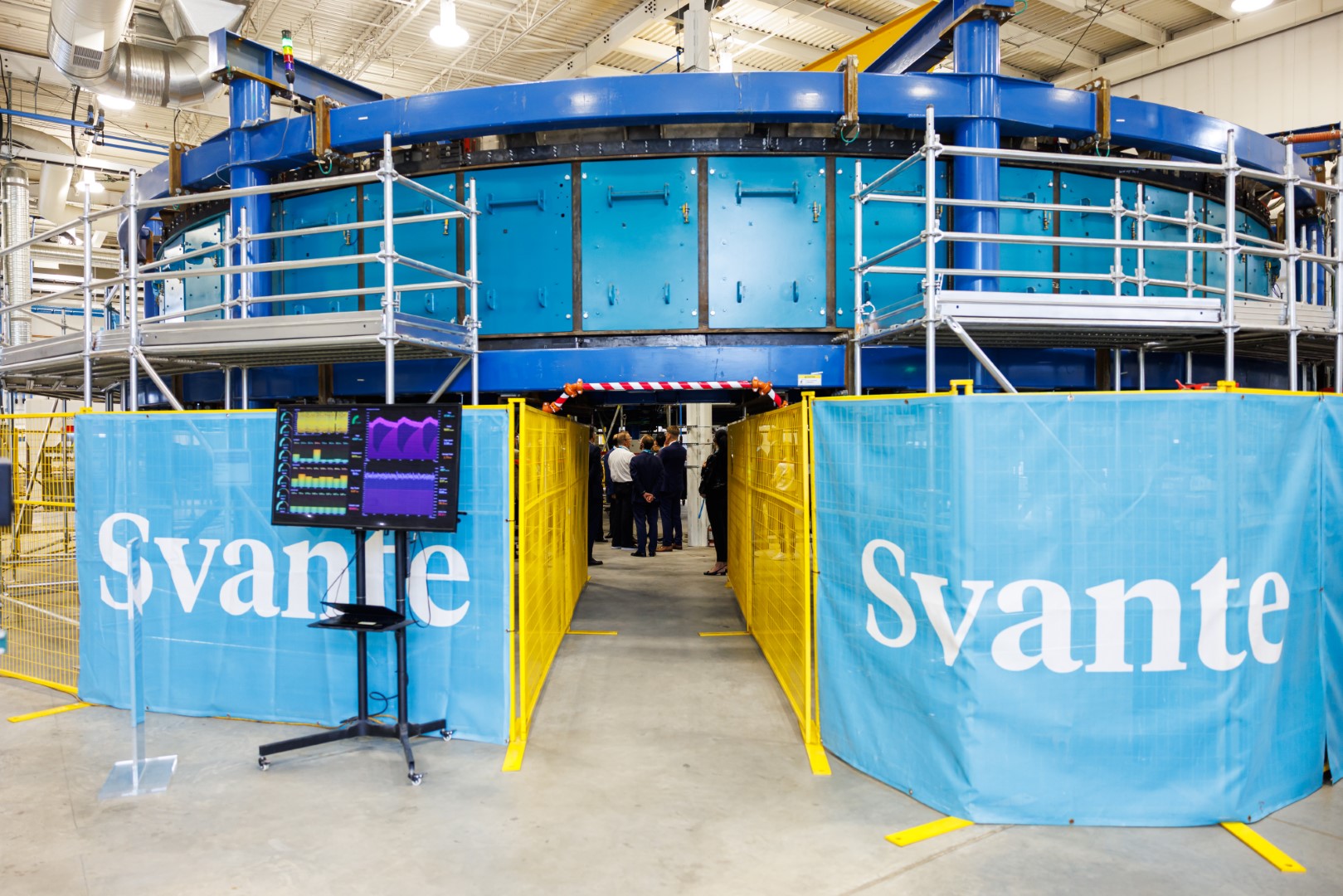By Matthew Stevenson, Chief Revenue Officer, Svante
Walk into Svante’s new 141,000-square-foot Redwood manufacturing facility in Burnaby, B.C., and you might think you’ve stepped onto the floor of a next-gen electric vehicle battery factory. Robotic arms twist and whirr. Sheets of thin material slide down a roll-to-roll assembly line with the precision of a watch mechanism. And while these machines are indeed similar to those used to make car batteries, what’s being produced here isn’t a way to store energy, but rather to trap carbon dioxide.
Redwood is the world’s first commercial-scale factory for manufacturing carbon capture filters, marking a bold new chapter in carbon management technology. Built with $145 million in investment, the facility is capable of making enough filters to capture 10 million tons of CO₂ each year. That’s enough to offset the annual energy usage of 1.2 million homes and represents one-fourth the capacity of all existing carbon capture projects worldwide.
It isn’t just a factory. It’s the first blueprint for scaling carbon capture and removal from pilot projects to high-throughput manufacturing deployment, thus helping it mature into a practical—and affordable—tool for industries around the world to meet the challenge of carbon management.
The Core Innovation: Solid Sorbents Coated onto Filters
At the heart of Svante’s approach is a shift in active material medium. Traditional carbon capture often relies on liquid amines. These chemicals are energy-intensive and can release harmful byproducts. Svante’s patented technology uses solid sorbents, engineered at the nanoscale to trap CO₂ like molecular flypaper.
This class of advanced nano-materials, or sorbents, called metal-organic frameworks (MOFs), has a unique property: an astonishing surface area folded into a tiny space. A sugar cube’s worth has the footprint of a football field. The larger the surface, the more CO₂ it can grab. And these advanced
materials have a much longer shelf life than liquid amines. They regenerate cleanly using direct low-pressure steam injection, maintaining high selectivity for CO₂ and reducing operational emissions.
Laminates on a Roll, Filters at Scale
But having a breakthrough advanced material isn’t enough. What makes Redwood remarkable is how Svante has industrialized its assembly to meet the diverse needs of customers at scale. Whereas incumbent liquid solvent-based technologies have relied on existing chemical production methods, solid sorbent-based carbon-capture filters required the development of an entirely new supply chain, which is now in place.
The fully automated production line—similar to making thin-film lithium batteries—has been adapted to coat the sorbent material onto a thin substrate support in a roll-to-roll process. The substrate looks like an industrial paper roll but acts like a carbon magnet.
Here’s how it works: the sorbent is mixed into a slurry, then applied as a thin film that is then dried, cut, and layered into standardized modules that become part of a filter bed roughly the size of a storage cabinet. These beds are then packed into Svante’s proprietary rotary contactor, a carbon-capture machine equipped with a built-in process to trap diluted CO₂, concentrate it, and release it every 60 seconds.
Each contactor contains 48 filter beds arranged in a rotating ring. As the machine turns slowly, a filter bed is exposed to hot flue gas, soaking up the CO₂. When saturated, the filter bed rotates to a regenerative stage where it is injected with low-pressure steam, releasing the concentrated CO₂ for compression and transport to a permanent storage site.
Powering an Industrial Revolution in Reverse
Redwood’s design reflects a dedication to throughput. Quality control sensors monitor coating consistency in real-time. Automated robots ensure precision and consistency. The line operates 24/7. All this reduces variability, slashes unit costs, and allows us to address megatons of carbon rather than mere kilograms.
That scale is essential. To meet climate targets, the world needs to be capturing 100 million tons of CO₂ annually by 2030, then ramping up to several gigatons by 2050. Svante’s approach turns that ambition from a pipe dream to a real possibility.
And Svante isn’t going it alone. Our strategic partnerships with BASF, Chevron, GE Vernova, Baker Hughes, Samsung E&A, Kiewit, and others are positioning the technology to scale globally. Redwood is the first of several planned filter “gigafactories” that will serve a growing roster of CCUS projects in pulp and paper, ethanol, cement, steel, and refining worldwide.
A Profitable Path to Decarbonization
The Redwood model proves that carbon capture doesn’t have to be bespoke, expensive, or environmentally risky. Instead, it can be high-volume, reliable, and cost-efficient—more like automotive manufacturing than chemical processing.
In short, Redwood is not just a facility, it’s a force multiplier. It shows what’s possible when deep tech meets deep urgency. It’s not just capturing carbon. It’s capturing momentum.
Learn more about Svante’s innovative carbon capture and removal technology and how we can be a partner to your business.




